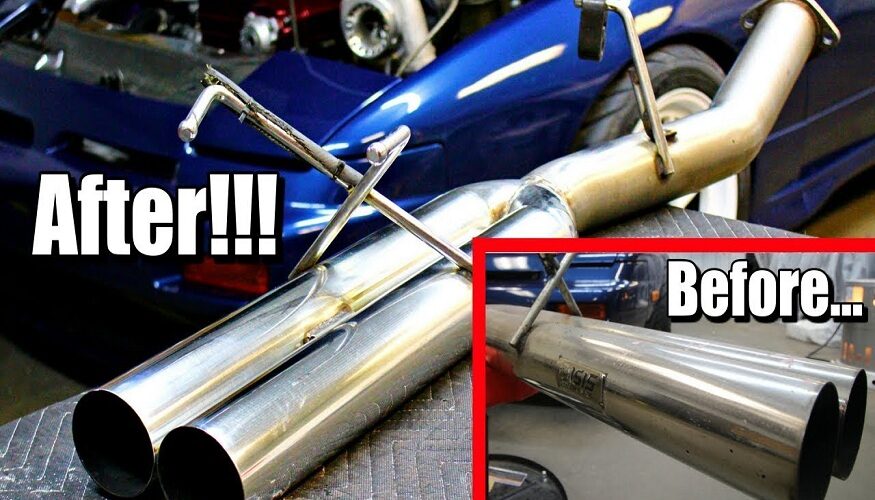Whether in stainless steel, sometimes covered with chrome, the exhaust line is a part particularly exposed to aging. Due to its exposure facing the road, but above all due to its significant heat production. Line like “pot” oxidizes, ages, tarnishes and pits to eventually rust. And by dint of rusting, the manifold can even get punctured or cracked, making your muffler as noisy as if it weren’t there.
At best, the silencer loses its beautiful iridescent coloring of any new line, or simply its clean appearance. Here are some tips and tricks to restore it to its full glory with quick and easy solutions.
There are several solutions and especially two methods. One manual, based on elbow grease and great effort, the other mechanical, requiring a little equipment, starting with a corded or cordless drill. Do not hesitate to share your own recipes, even if they are from grandmother, they are the best!
Materials needed, before you start
- Dishwashing liquid or Marseille soap
- Belgum Alu or equivalent
- Steel wool 000 or 0000
- Polishing wadding
- Clean cloth or microfiber
- Finishing brush 60×30 grain 180
- Drill with disc holder and felt discs
A wash first and foremost
First of all, washing in hot water with dishwashing liquid or Marseille soap is a good solution to remove the grease and impurities present on the line. It is even the best everyday solution. In all cases, care should be taken in the use of pressurized jet and Karcher type equipment, preventing water from entering the interior, with risks of corrosion subsequently from the interior.
Now if there are signs of corrosion on the muffler or if the surface has tarnished, then the use of maintenance products is recommended.
An efficient drill polishing method: Silicon carbide flap brush on shank
If the exhaust line is severely damaged, do not hesitate to use mechanical polishing solutions. Corded or cordless drill required, but guaranteed result without too much effort, just a little time. Not only is the solution very effective on all types of substrates, but it is also active on many types of deterioration, ranging from traces of tar to deposits of all kinds.
We start by fitting the finishing brush and we start to sand, which will remove some of the shine if there is still any left. There is no need to force or press the sander. The brush has to do the job. You will think about putting on a mask to protect your respiratory tract from all the particles that will fly away.
Depending on the brush, sanding can generate micro-scratches, the importance of not pressing too much and having a uniform movement so as not to cross and reinforce the depth of any scratches.
You can sand both the silencer, the line and the manifold in this way.

